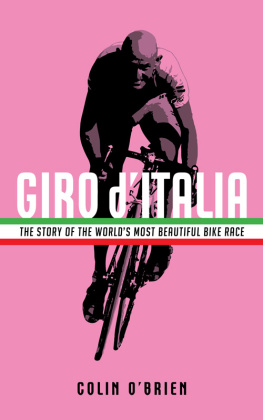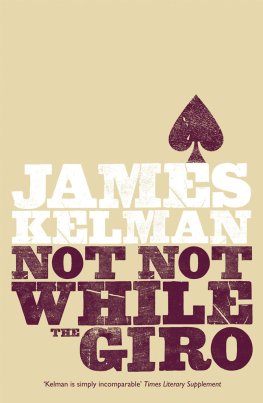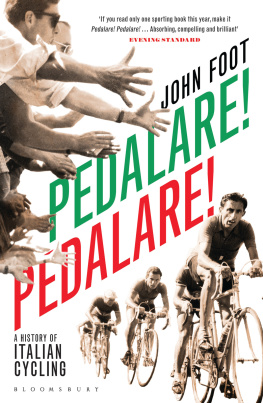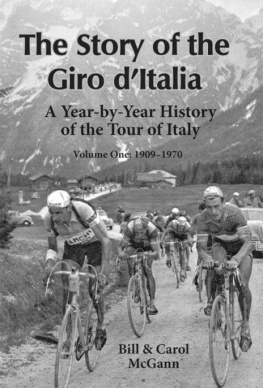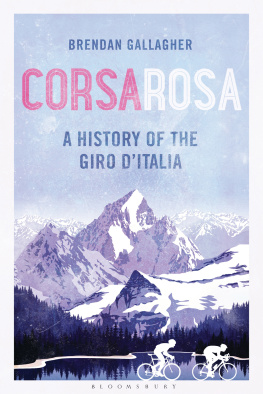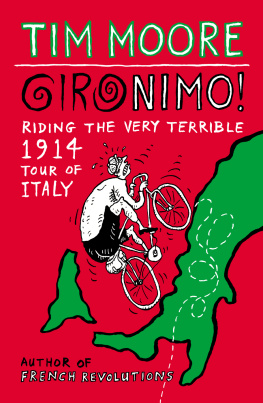Colin OBrien - Giro DItalia
Here you can read online Colin OBrien - Giro DItalia full text of the book (entire story) in english for free. Download pdf and epub, get meaning, cover and reviews about this ebook. publisher: Profile Books, genre: Non-fiction. Description of the work, (preface) as well as reviews are available. Best literature library LitArk.com created for fans of good reading and offers a wide selection of genres:
Romance novel
Science fiction
Adventure
Detective
Science
History
Home and family
Prose
Art
Politics
Computer
Non-fiction
Religion
Business
Children
Humor
Choose a favorite category and find really read worthwhile books. Enjoy immersion in the world of imagination, feel the emotions of the characters or learn something new for yourself, make an fascinating discovery.
- Book:Giro DItalia
- Author:
- Publisher:Profile Books
- Genre:
- Rating:3 / 5
- Favourites:Add to favourites
- Your mark:
- 60
- 1
- 2
- 3
- 4
- 5
Giro DItalia: summary, description and annotation
We offer to read an annotation, description, summary or preface (depends on what the author of the book "Giro DItalia" wrote himself). If you haven't found the necessary information about the book — write in the comments, we will try to find it.
Giro DItalia — read online for free the complete book (whole text) full work
Below is the text of the book, divided by pages. System saving the place of the last page read, allows you to conveniently read the book "Giro DItalia" online for free, without having to search again every time where you left off. Put a bookmark, and you can go to the page where you finished reading at any time.
Font size:
Interval:
Bookmark:
GIRO dITALIA
COLIN OBRIEN is an Irish sports writer based in Rome. His passion for cycling and the European professional racing scene was ignited when Marco Pantani and the worlds best riders came to Dublin with the 1998 Tour de France. He contributes to leading publications worldwide, including Rouleur, Peloton, Cyclist, and ProCycling.
GIRO dITALIA
THE STORY OF THE WORLDS MOST BEAUTIFUL BIKE RACE
COLIN OBRIEN

First published in Great Britain in 2017 by
PURSUIT BOOKS
An imprint of Profile Books Ltd
3 Holford Yard
Bevin Way
London
WC1X 9HD
www.profilebooks.com
Copyright Colin OBrien, 2017
The moral right of the author has been asserted.
All rights reserved. Without limiting the rights under copyright reserved above, no part of this publication may be reproduced, stored or introduced into a retrieval system, or transmitted, in any form or by any means (electronic, mechanical, photocopying, recording or otherwise), without the prior written permission of both the copyright owner and the publisher of this book.
A CIP catalogue record for this book is available from the British Library.
eISBN 978 1 78283 290 4
LIST OF ILLUSTRATIONS
While every effort has been made to contact copyright-holders of illustrations, the author and publishers would be grateful for information about any illustrations where they have been unable to trace them, and would be glad to make amendments in further editions.
PREFACE
With the possible exception of a long Christmas dinner at home in Dublin, theres nothing I look forward to every year more than the Giro dItalia. There are a few reasons for this: first, the route tends to take the race, and with it the journalists, to a great many places that I would never otherwise see. And second, after having had my appetite whetted by the early seasons one-day classics, the promise of three weeks of continuous, ever-changing, unpredictable action never fails to fire the imagination. But more than that, I look forward to the Giro because it heralds the arrival of summer. The weather in May is still capricious, and the mountains still covered in snow, but once you see the pink of the Maglia Rosa you know that long, sun-drenched days are not far off.
Theres also the social aspect to it. The Giro is something to talk about. Like football, but less formulaic. The races history is littered with riders who were nailed-on to win it, right up until the moment when they didnt, and that keeps it interesting, making every edition feel new. It helps, too, that the race is the real attraction. More than the teams or the riders, you tune in or turn up to see the Giro itself. Without wanting to trivialise its ability to excite and entertain, the Giro is just something to do. For the guts of a month every year, it ingrains itself into everyday life in a way that few other cultural phenomena can. It can be joyful, heart-breaking, exhilarating and infuriating. It can be all those things at once. But it is rarely, if ever, boring. If anyone asks me why they should watch it, thats the reason I give. Its also the best reason I had to write this book.
Obviously, this is a work of non-fiction, but from the outset I had an overarching narrative in mind. The deeper I went with my research, the more tempting it became to deviate from that idea and mention every single detail of the races 108-year history, but it was never my intention to write an encyclopaedia of the Giro dItalia, because I would never want to read one. I wanted to tell the story of what I think is the worlds most exciting sporting event. I hope that this book does it justice.
INTRODUCTION
Imagine a different Italy. A recently integrated kingdom of disparate regions, mostly inhabited by peasantry. Almost half the population was illiterate, and the majority spoke dialect rather than the Florentine standard of the state. Even the countrys first king, Victor Emmanuel II, Padre della Patria, Father of the Fatherland, struggled to use the countrys official language.
What roads existed were rough and narrow and rarely, if ever, paved. Away from the cobbled urban centres, mostly they were nothing more than compacted dirt and gravel. The masses relied on mules and bicycles, not cars, for labour and transport. The Fabbrica Italiana Automobili Torino (Fiat), was less than a decade old and some way away from becoming one of Europes great automotive giants. Rome, Milan, Turin and Naples were all experiencing rapid growth, but the majority of the countrys 32 million inhabitants lived in small towns or in the countryside.
The capital was still plagued by malaria from the dreaded Pontine Marshes, and it would be 20 years before the Italian government resolved its dispute with the Vatican, having forcibly annexed the Papal States in 1870. Giuseppe Garibaldi, the general and politician who was born in Nice but would go on to lead the Risorgimento, Italys unification, had only died 27 years ago. The country was rapidly changing, and the Giro dItalia was both a reflection, and a reaction, to that fact. The founding fathers desire to build a modern state, the creation of the Kingdom of Italy and the attempted integration of its diverse, remote and often contradictory constituent parts, was still more current affairs than ancient history when the races first edition rolled away from the Gazzetta dello Sports office on Milans Piazzale Loreto in 1909. As strange and as modern a contraption as the bicycle must have seemed to many onlookers, the very idea of having an Italy to ride around was most likely just as intriguing a curiosity.
Cycling fans in the Bel Paese sometimes joke that the race has done more to unite Italy than Garibaldis Risorgimento ever managed. And while this is said with tongue planted firmly in cheek, perhaps theres a grain of truth to it, because in the early twentieth century this was still very much a country divided. Much of the north was against integration, as was the Vatican, and while Naples and the south supported it, that had more to do with disdain for the Bourbon royal family and the Kingdom of the Two Sicilies than it did with any real enthusiasm for the new state. LItalia fatta. Restano da fare gli italiani, observed Massimo dAzeglio, the prime minister of Sardinia and a supporter of unification. Italy has been made. Now we must make Italians.
It would be hard not to notice a certain irony in the effect that the countrys peculiar geography has on its citizens and their relationship with the nation, even today in an age of motorways, high-speed rail and low-cost flights. Because while it was never very useful when it came to discouraging foreign encroachment, Italys topography from the great plains of the north, bounded by the Alps and the Dolomites, to the long, narrow peninsula that is almost completely bisected by the Apennines has been very effective in keeping its own inhabitants separate and ensconced in their own cultural, culinary and linguistic idiosyncrasies. Even if you arrived blindfolded to a town, a simple look at a local menu would give you an idea of where you were. In our age of convenience, you might find a cuttlefish risotto in Florence or Milan, but it wont compare to Venetian archetype. Tortellini are best eaten in Emilia-Romagna, and pizza in Naples. Turin is veal braised in red wine, and powerful cheeses with a clear French influence. Orecchiette, little pasta discs named after the little ears they resemble, mean Puglia, and youre unlikely to find a plate of Pajata, the intestines of an unweaned calf, or a truly special carbonara, outside of the capital. Even something as simple as the Sicilian arancini deep-fried rice balls traditionally stuffed with a meat sauce and peas can give a little locational hint, because they change shape from spherical to conical depending on whether youre on the north or the south coast of the island.
Next pageFont size:
Interval:
Bookmark:
Similar books «Giro DItalia»
Look at similar books to Giro DItalia. We have selected literature similar in name and meaning in the hope of providing readers with more options to find new, interesting, not yet read works.
Discussion, reviews of the book Giro DItalia and just readers' own opinions. Leave your comments, write what you think about the work, its meaning or the main characters. Specify what exactly you liked and what you didn't like, and why you think so.

